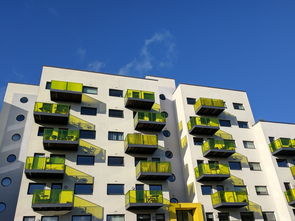In the annals of architectural history, China stands as a beacon, illuminating centuries-old wisdom and innovation with its awe-inspiring structures. As a contemporary master in this field, I am passionate about translating the essence of these iconic landmarks into the global language of design, while preserving their rich cultural significance. This essay delves into some of the most renowned Chinese buildings and their English translations, highlighting their architectural prowess and the narratives they convey.
1、The Great Wall of China: Stretching over 13,000 miles, the Great Wall is a living testament to human ingenuity and determination. Its translation to English is often simplified as "the Long Wall," capturing its grandeur but failing to convey the sheer scale. This monumental structure, an engineering marvel, symbolizes the country's defensive prowess and resilience.
2、The Forbidden City: Located in Beijing, this imperial palace complex is a UNESCO World Heritage site and a testament to the opulence of the Ming and Qing dynasties. Translated as "the Inner City," it encapsulates the majesty and isolation of the royal domain. Its elaborate architecture and intricate details illustrate the meticulous craftsmanship of ancient Chinese architects.
3、Terracotta Army: Discovered in Xi'an, the Terracotta Warriors and Horses represent the military might of the Qin Dynasty. In English, it's known as the "Terra Cotta Army," highlighting the archaeological find but losing some of the awe it inspires. The sheer number and lifelike sculptures depict the grandeur of the emperor and his empire.
4、The Bund in Shanghai: This riverside promenade, once the financial heart of the city, showcases a blend of Western and Chinese architecture. Known as "the Bund," it represents the fusion of tradition and modernity that characterizes Chinese urban planning. Its English name captures the mix but doesn't fully capture the vibrancy and history embedded in its facades.
5、The Temple of Heaven: A masterpiece of imperial architecture, the Temple of Heaven symbolizes the connection between heaven and earth. In English, it's referred to as the "Temple of the Heaven," emphasizing the religious aspect but overlooking the harmonious relationship with nature it embodies.
6、The Potala Palace: Perched high on the Tibetan plateau, the Potala Palace is a sacred site and a UNESCO World Heritage site. Its English translation, "The Red Palace," conveys its color but misses the spiritual depth and cultural significance for Buddhists.
Each of these buildings, both old and new, embodies the essence of Chinese architecture. They not only serve as functional spaces but also convey stories of power, spirituality, and cultural evolution. As a contemporary architect, it is my privilege to reinterpret them for a global audience, while respecting their historical context and cultural heritage. By doing so, we can celebrate the universal language of architecture and foster a deeper appreciation for the beauty and complexity of Chinese culture.











